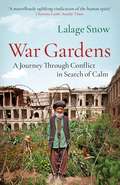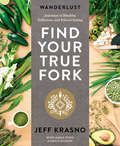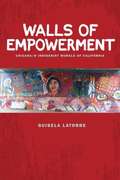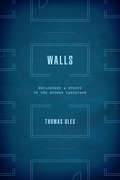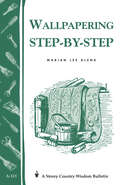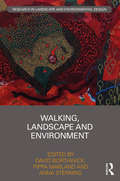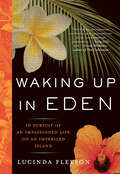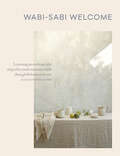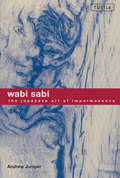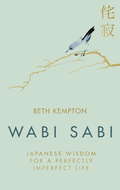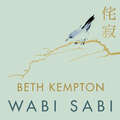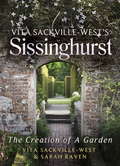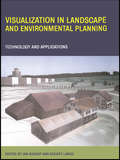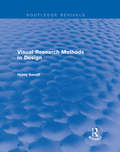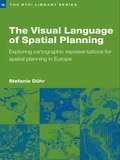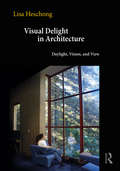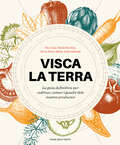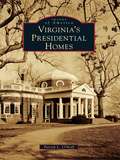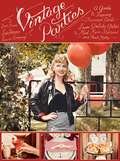- Table View
- List View
War Gardens: A Journey Through Conflict in Search of Calm
by Lalage Snow'A remarkable book . . . It's a powerful testament to the healing balm of gardening and the resilience of the human spirit in the direst of circumstances.' Financial Times'Not a happy book and yet it's magically heartening. It makes a gardener question his or her values.' The Times'This extraordinary book...warm and engaging...like a photograph magicked to life.' Spectator'Snow has spent ten years as a photographer and filmmaker covering unrest . . . Throughout that time she has sought comfort in green oases and come to understand "how vital gardens are 'against a horrid wilderness' of war". . . There can be few counter-narratives as enchanting and sad as those Snow recounts in War Gardens.' Times Literary Supplement'For all these victims of war, their gardens are places in which to breathe, providing moments of calm, hope and optimism in a fragile life of horror and uncertainty. For many, it helps them to grieve. Books seldom bring a lump to my throat, but this one did.' Spectator'What makes War Gardens the most illuminating garden book to be published this year, is the realisation that people's gardens are the antidotes to the horrors of their surroundings.' Country LifeA journey through the most unlikely of gardens: the oases of peace people create in the midst of warIn this millennium, we have become war weary. From Afghanistan to Iraq, from Ukraine to South Sudan and Syria, from Kashmir to the West Bank, conflict is as contagious and poisonous as Japanese knotweed. Living through it are people just like us with ordinary jobs, ordinary pressures and ordinary lives. Against a new landscape of horror and violence it is up to them to maintain a modicum of normality and colour. For some, gardening is the way to achieve this.Working in the world's most dangerous war zones, freelance war correspondent and photographer Lally Snow has often chanced across a very moving sight, a testimony to the triumph of the human spirit in adversity, a celebration of hope and beauty: a war garden. In Kabul, the royal gardens are tended by a centenarian gardener, though the king is long gone; in Camp Bastion, bored soldiers improvise tiny gardens to give themselves a moment's peace; on both sides of the dividing line in Jerusalem families tend groves of olives and raise beautiful plants from the unforgiving, disputed landscape; in Ukraine, families tend their gardens in the middle of a surreal, frozen war.War Gardens is a surprising, tragic and beautiful journey through the darkest places of the modern world, revealing the ways people make time and space for themselves and for nature even in the middle of destruction. Illustrated with Lally Snow's own award-winning photography, this is a book to treasure.
Wanderlust Find Your True Fork: Journeys in Healthy, Delicious, and Ethical Eating
by Jeff Krasno Maria Zizka Grace EdquistFrom Jeff Krasno, author of Wanderlust and creator of the wildly popular Wanderlust festivals, comes the foodie’s roadmap to making responsible, ethical decisions about food—you don’t have to be a yogi to try out these delicious, organic, and seasonal recipes. Wanderlust Find Your True Fork answers all the questions you have about eating a healthy, whole foods diet, explaining how to start an urban garden, providing composting techniques, and demystifying biodynamic agriculture. It’s the definitive guide to developing a closer connection to what you eat.With the help of an all-star cast of chefs and wellness influencers (including Jessica Koslow, Deborah Madison, Jason Wrobel, and Guy Turland) that contribute expert advice, the book has yummy recipes for vegans, vegetarians, omnivores, and everything in between. Being conscious about what we put in our bodies is a cornerstone of living a balanced life, and with Wanderlust Find Your True Fork you can take that passion for healthy living off the mat and onto the plate.
Walls of Empowerment
by Guisela LatorreExploring three major hubs of muralist activity in California, where indigenist imagery is prevalent, Walls of Empowerment celebrates an aesthetic that seeks to firmly establish Chicana/o sociopolitical identity in U. S. territory. Providing readers with a history and genealogy of key muralists' productions, Guisela Latorre also showcases new material and original research on works and artists never before examined in print. An art form often associated with male creative endeavors, muralism in fact reflects significant contributions by Chicana artists. Encompassing these and other aspects of contemporary dialogues, including the often tense relationship between graffiti and muralism, Walls of Empowerment is a comprehensive study that, unlike many previous endeavors, does not privilege non-public Latina/o art. In addition, Latorre introduces readers to the role of new media, including performance, sculpture, and digital technology, in shaping the muralist's "canvas. " Drawing on nearly a decade of fieldwork, this timely endeavor highlights the ways in which California's Mexican American communities have used images of indigenous peoples to raise awareness of the region's original citizens. Latorre also casts murals as a radical force for decolonization and liberation, and she provides a stirring description of the decades, particularly the late 1960s through 1980s, that saw California's rise as the epicenter of mural production. Blending the perspectives of art history and sociology with firsthand accounts drawn from artists' interviews, Walls of Empowerment represents a crucial turning point in the study of these iconographic artifacts.
Walls: Enclosure and Ethics in the Modern Landscape
by Thomas OlesStone walls, concrete walls, chain-link walls, border walls: we live in a world of walls. Walls mark sacred space and embody earthly power. They maintain peace and cause war. They enforce separation and create unity. They express identity and build community. Yard to nation, city to self, walls define and dissect our lives. And, for Thomas Oles, it is time to broaden our ideas of what they can--and must--do. In Walls, Oles shows how our minds and our politics are shaped by-and shape-our divisions in the landscape. He traces the rich array of practices and meanings connected to the making and marking of boundaries across history and prehistory, and he describes how these practices have declined in recent centuries. The consequence, he argues, is all around us in the contemporary landscape, riven by walls shoddy in material and mean in spirit. Yet even today, Oles demonstrates, every wall remains potentially an opening, a stage, that critical place in the landscape where people present themselves and define their obligations to one another. In an evocative epilogue, Oles brings to life a society of productive, intentional, and ethical enclosure--one that will leave readers more hopeful about the divided landscapes of the future.
Wallpapering Step-by-Step: Storey's Country Wisdom Bulletin A-113 (Storey Country Wisdom Bulletin Ser.)
by Marian Lee KlenkSince 1973, Storey's Country Wisdom Bulletins have offered practical, hands-on instructions designed to help readers master dozens of country living skills quickly and easily. There are now more than 170 titles in this series, and their remarkable popularity reflects the common desire of country and city dwellers alike to cultivate personal independence in everyday life.
Walking, Landscape and Environment (Routledge Research in Landscape and Environmental Design)
by David Borthwick Pippa Marland Anna StenningWalking, Landscape and Environment explores walking as a method of research and practice in the humanities and creative arts, emerging from a recent surge of growth in urban and rural walking. This edited collection of essays from leading figures in the field presents an enquiry into, and a critique of, the methods and results of cutting-edge ‘walking research’. Walking negotiates the intersections between the human self, place and space, offering a cross-disciplinary collaborative method of research which can be utilised in areas such as ecocriticism, landscape architecture, literature, cultural geography and the visual arts. Bringing together a multitude of perspectives from different disciplines, on topics including health and wellbeing, disability studies, social justice, ecology and gender, this book provides a unique appraisal of the humanist perspective on landscape. In doing so, it challenges Romantic approaches to walking, applying new ideas in contemporary critical thought and alternative perspectives on embodiment and trans-corporeality.
Waking Up in Eden: In Pursuit of an Impassioned Life on an Imperiled Island
by Lucinda FleesonA woman journeys to Kauai to save Hawaii’s native plants: “Part history, part personal confession, part cautionary tale about environmental preservation” (Gioia Diliberto, author of Paris Without End). One day, Lucinda Fleeson quit her big-city newspaper job, sold her suburban house, and moved halfway across the world to the island of Kauai to work at the National Tropical Botanical Garden. Imagine a hundred-acre garden estate nestled amid ocean cliffs, rain forests, and secluded coves. Exotic and beautiful, yes, but as Fleeson awakens to this sensual world, exploring the island’s food, beaches, and history, she encounters an endangered paradise—the Hawaii we don’t see in the tourist brochures. Native plants are dying at an astonishing rate—Hawaii is called the Extinction Capital of the World—and invasive species (plants, animals, and humans) have imperiled this Garden of Eden. Fleeson accompanies a plant hunter into the rain forest to find the last of a dying species, descends into limestone caves with a paleontologist who deconstructs island history through fossil life, and shadows a botanical pioneer who propagates rare seeds, hoping to reclaim the landscape. Her grown-up adventure is a reminder of the value of choosing passion over security, individuality over convention, and the pressing need to protect the earth. And as she witnesses the island’s plant renewal efforts, she sees her own life blossom again. “[An] impeccably researched, beautifully told tale of how America’s most exotic locale transformed the life of an urban journalist.” —Gioia Diliberto “As she delves deep into the island’s history and ventures far into its delicate ecosystem, Fleeson undertakes her own personal and professional salvation, a spirited and daring pilgrimage that is both revelatory and enlightening.” —Booklist
The Wacky Ways Some Foods Grow (Fountas & Pinnell Classroom, Guided Reading Grade 4)
by Davia LukeSOME SURPRISING PLANTS We all know that fruits and vegetables grow on trees or plants. But some foods grow in very strange ways. Check out the wacky ways these foods go from seeds to the supermarket. NIMAC-sourced textbook
Wabi-Sabi Welcome: Learning to Embrace the Imperfect and Entertain with Thoughtfulness and Ease
by Julie Pointer Adams“An antidote to the veneer of perfectionism so often presented by books of its kind, Wabi-Sabi Welcome offers readers license to slow down and host guests with humility, intention, and contentment.” —Nathan Williams, founder of KinfolkWabi-Sabi Welcome is sharing a pot of tea with friends. It is preparing delicious food to nourish, not to show off. It’s keeping a basket of cozy slippers at the door for guests. It is well-worn linens, bouquets of foraged branches, mismatched silverware, and heirloom bowls infused with the spirit of meals served with love. In this lush entertaining manual, author Julie Pointer Adams invites readers into artful, easygoing homes around the world—in Denmark, California, France, Italy, and Japan—and teaches us how to turn the generous act of getting together into the deeper art of being together. In this book, readers will find: unexpected, thoughtful ideas and recipes from around the world; tips for creating an intimate, welcoming environment; guidelines for choosing enduring, natural decor for the home; and inspiring photographs from homes where wabi-sabi is woven into daily living.
Wabi Sabi
by Andrew JuniperDeveloped out of the aesthetic philosophy of cha-no-yu (the tea ceremony) in fifteenth-century Japan, wabi sabi is an aesthetic that finds beauty in things imperfect, impermanent, and incomplete. Taken from the Japanese words wabi, which translates to less is more, and sabi, which means attentive melancholy, wabi sabi refers to an awareness of the transient nature of earthly things and a corresponding pleasure in the things that bear the mark of this impermanence. As much a state of mind--an awareness of the things around us and an acceptance of our surroundings--as it is a design style, wabi sabi begs us to appreciate the simple beauty in life--a chipped vase, a quiet rainy day, the impermanence of all things. Presenting itself as an alternative to today's fast-paced, mass-produced, neon-lighted world, wabi sabi reminds us to slow down and take comfort in the simple, natural beauty around us.In addition to presenting the philosophy of wabi-sabi, this book includes how-to design advice--so that a transformation of body, mind, and home can emerge.Chapters include:History: The Development of Wabi SabiCulture: Wabi Sabi and the Japanese CharacterArt: Defining AestheticsDesign: Creating Expressions with Wabi Sabi MaterialsSpirit: The Universal Spirit of Wabi Sabi
Wabi Sabi
by Andrew JuniperWabi sabi, the quintessential Japanese design aesthetic, is quickly gaining popularity around the world, as evidenced by recent articles in Time, The Chicago Tribune and Kyoto Journal. Taken from the Japanese words wabi, which translates to less is more, and sabi, which means attentive melancholy, wabi sabi refers to an awareness of the transient nature of earthly things and a corresponding pleasure in the things that bear the mark of this impermanence. As a design style, wabi sabi helps us to appreciate the simple beauty in imperfection--of a chipped vase or a rainy day, for example.
Wabi Sabi
by Andrew JuniperWabi sabi, the quintessential Japanese design aesthetic, is quickly gaining popularity around the world, as evidenced by recent articles in Time, The Chicago Tribune and Kyoto Journal. Taken from the Japanese words wabi, which translates to less is more, and sabi, which means attentive melancholy, wabi sabi refers to an awareness of the transient nature of earthly things and a corresponding pleasure in the things that bear the mark of this impermanence. As a design style, wabi sabi helps us to appreciate the simple beauty in imperfection--of a chipped vase or a rainy day, for example.
Wabi Sabi: Japanese Wisdom for a Perfectly Imperfect Life
by Beth Kempton'A truly transformative read' Sunday Times STYLE'More than ever, we need books like this' Jessica Seaton, Co-Founder of Toast and author of Gather, Cook, FeastA whole new way of looking at the world - and your life - inspired by centuries-old Japanese wisdom.Wabi sabi ("wah-bi sah-bi") is a captivating concept from Japanese aesthetics, which helps us to see beauty in imperfection, appreciate simplicity and accept the transient nature of all things. With roots in zen and the way of tea, the timeless wisdom of wabi sabi is more relevant than ever for modern life, as we search for new ways to approach life's challenges and seek meaning beyond materialism.Wabi sabi is a refreshing antidote to our fast-paced, consumption-driven world, which will encourage you to slow down, reconnect with nature, and be gentler on yourself. It will help you simplify everything, and concentrate on what really matters.From honouring the rhythm of the seasons to creating a welcoming home, from reframing failure to ageing with grace, wabi sabi will teach you to find more joy and inspiration throughout your perfectly imperfect life.This book is the definitive guide to applying the principles of wabi sabi to transform every area of your life, and finding happiness right where you are.
Wabi Sabi: Japanese Wisdom for a Perfectly Imperfect Life
by Beth Kempton'A truly transformative read' Sunday Times STYLE'More than ever, we need books like this' Jessica Seaton, Co-Founder of Toast and author of Gather, Cook, FeastA whole new way of looking at the world - and your life - inspired by centuries-old Japanese wisdom.Wabi sabi ("wah-bi sah-bi") is a captivating concept from Japanese aesthetics, which helps us to see beauty in imperfection, appreciate simplicity and accept the transient nature of all things. With roots in zen and the way of tea, the timeless wisdom of wabi sabi is more relevant than ever for modern life, as we search for new ways to approach life's challenges and seek meaning beyond materialism.Wabi sabi is a refreshing antidote to our fast-paced, consumption-driven world, which will encourage you to slow down, reconnect with nature, and be gentler on yourself. It will help you simplify everything, and concentrate on what really matters.From honouring the rhythm of the seasons to creating a welcoming home, from reframing failure to ageing with grace, wabi sabi will teach you to find more joy and inspiration throughout your perfectly imperfect life.This book is the definitive guide to applying the principles of wabi sabi to transform every area of your life, and finding happiness right where you are.
Vivir al extremo (¡Arriba la Lectura!, Level O #55)
by Lisa Trumbauer¿Te imaginas vivir en el Ártico, en el desierto o en la cima de una montaña? ¡Hay quienes viven allí! Lee sobre sus vidas y la experiencia de hospedarse en hoteles extremos. NIMAC-sourced textbook
Vita Sackville-West's Sissinghurst: The Creation of a Garden
by Vita Sackville-West Sarah RavenFrom 1946 to 1957, Vita Sackville-West, the poet, bestselling author of All Passion Spent and maker of Sissinghurst, wrote a weekly column in the Observer describing her life at Sissinghurst, showing her to be one of the most visionary horticulturalists of the twentieth-century.With wonderful additions by Sarah Raven, Vita Sackville-West's Sissinghurst draws on this extraordinary archive, revealing Vita's most loved flowers, as well as offering practical advice for gardeners. Often funny and completely accessibly written with colour and originality, it also describes details of the trials and tribulations of crafting a place of beauty and elegance.Sissinghurst has gone on to become one of the most visited and inspirational gardens in the world and this marvellous book, illustrated with drawings and original photographs throughout, shows us how it was created and how gardeners everywhere can use some of the ideas from both Sarah Raven and Vita Sackville-West.
Vita Sackville-West's Sissinghurst: The Creation of a Garden
by Vita Sackville-West Sarah RavenFrom 1946 to 1957, Vita Sackville-West, the poet, bestselling author of All Passion Spent and maker of Sissinghurst, wrote a weekly column in the Observer describing her life at Sissinghurst, showing her to be one of the most visionary horticulturalists of the twentieth-century.With wonderful additions by Sarah Raven, Vita Sackville-West's Sissinghurst draws on this extraordinary archive, revealing Vita's most loved flowers, as well as offering practical advice for gardeners. Often funny and completely accessibly written with colour and originality, it also describes details of the trials and tribulations of crafting a place of beauty and elegance.Sissinghurst has gone on to become one of the most visited and inspirational gardens in the world and this marvellous book, illustrated with drawings and original photographs throughout, shows us how it was created and how gardeners everywhere can use some of the ideas from both Sarah Raven and Vita Sackville-West.
Visualizing the Afterlife in the Tombs of Graeco-Roman Egypt
by Marjorie Susan VenitLost in Egypt's honeycombed hills, distanced by its western desert, or rendered inaccessible by subsequent urban occupation, the monumental decorated tombs of the Graeco-Roman period have received little scholarly attention. This volume serves to redress this deficiency. It explores the narrative pictorial programs of a group of decorated tombs from Ptolemaic and Roman-period Egypt (ca. 300 BCE 250 CE). Its aim is to recognize the tombs' commonalities and differences across ethnic divides and to determine the rationale that lies behind these connections and dissonances. This book sets the tomb programs within their social, political, and religious context and analyzes the manner in which the multicultural population of Graeco-Roman Egypt chose to negotiate death and the afterlife. "
Visualization in Landscape and Environmental Planning: Technology and Applications
by Ian D. Bishop Eckart LangeThis major reference presents the challenges, issues and directions of computer-based visualization of the natural and built environment and the role of such visualization in landscape and environmental planning. It offers a uniquely systematic approach to the potential of visualization and the writers are acknowledged experts in their field of specialization. Case studies are presented to illustrate many aspects of landscape management including forestry, agriculture, ecology, mining and urban development.
Visual Research Methods in Design (Routledge Revivals)
by Henry SanoffFirst published in 1991, this book is about applications and issues relating to the visual environment. The content pertains to the understanding of human behaviour in the environment by recording behaviour and actions or by direct interaction with people. The author examines research and planning methods that primarily stress the visual features of the physical environment. Traditionally, environmental research has relied on verbal descriptions and perceptions of the physical environment, virtually ignoring the visual component and the potential application of the social sciences for gathering this data. Various strategies that can expand the visual information base have been explored here: diagramming, photo-interviewing, photo-sorting, mapping, notation, simulation, videotaping, and CADD.
The Visual Language of Spatial Planning: Exploring Cartographic Representations for Spatial Planning in Europe (RTPI Library Series)
by Stefanie DührAt a time when strategic spatial planning is undergoing a renaissance in Europe, The Visual Language of Spatial Planning makes a unique contribution to this rapidly growing area of teaching and research. Discussing the relevant theoretical perspectives on policy-making and planning, combined with cartographic communication and the use of cartographic representations in the planning process, Stephanie Duhr provides conceptual and practical tools to help students and practitioners better understand maps and visualizations in strategic spatial planning. The book is the first to review the form, style and use of cartographic representations in strategic spacial plans in the Netherlands, Germany and England as well as at European level. Significant differences between planning traditions and the impact of these on transnational planning processes are highlighted. It concludes by discussing the practical implications for future strategic spacial planning processes in Europe and the best use of cartographic representations to reach agreement and to focus dialogue.
Visual Delight in Architecture: Daylight, Vision, and View
by Lisa HeschongVisual Delight in Architecture examines the many ways that our lives are enriched by the presence of natural daylight and window views within our buildings. It makes a compelling case that daily exposure to the rhythms of daylight is essential to our health and well-being, tied to the very genetic foundations of our physiology and cognitive function. It describes all the subtlety, beauty, and pleasures of well-daylit spaces and attractive window views, and explains how these are woven into the fabric of both our everyday sensory experience and enduring cultural perspectives. All types of environmental designers, along with anyone interested in human health and well- being, will fi nd new insights offered by Visual Delight in Architecture. The book is both accessible and provocative, full of personal stories and persuasive research, helping designers to gain a deeper understanding of the scientific basis of their designs, scientists to better grasp the real-world implications of their work, and everyone to more fully appreciate the role of windows in their lives.
Visca la terra: La guia definitiva per cultivar, cuinar, gaudir i conèixer els productes de Catalunya
by Pau Clua Sarró Anna Roca Torrent Maria Nicolau Maria José ValienteEl gran llibre per cultivar, cuinar i gaudir dels productes de l'hort Un homenatge a la terra i a tots els qui la treballen. La guia 360 per a totes aquelles persones que tinguin interès a cultivar, cuinar o consumir productes de la terra de manera responsable; amb tota la informació pràctica relacionada amb cada mes de l'any.Mes a mes: els productes de temporada, què sembrar i què plantar; el calendari lunar a tenir en compte en els treballs de camp i d'hort urbà, i totes les fires locals de productes. Receptes per a cada temporada, elaborades per la cuinera i escriptora Maria Nicolau. Frases fetes i dites per a cada mes de l'any, seleccionades per l'autora Maria José Valiente.12 mesos, 12 productes i 12 productors, entrevistes fetes per Anna Roca en què es presenten les fortaleses del sector agrari i ramader del territori.
Virginia's Presidential Homes
by Patrick L. O'NeillImages of America: Virginia's Presidential Homes takes a visual excursion to the homes of the eight Virginia-born men who served as president of the United States: George Washington, Thomas Jefferson, James Madison, James Monroe, William Henry Harrison, John Tyler, Zachary Taylor, and Woodrow Wilson. Virginia, nicknamed the "Mother of Presidents," is the birthplace of these eight men who were key to the success of the American Revolution, the forming of the U.S. government, the War of 1812, the annexation of Texas, the Mexican-American War, and World War I. Coming from diverse backgrounds and classes, their residences ranged from simple wood-frame structures to elegant, brick-pillared mansions and estates. Through images and drawings, this book will bring to life their homes and family life.
Vintage Parties: A Guide to Throwing Themed Events?from Gatsby Galas to Mad Men Martinis and Much More
by Linda Hansson Louise Lemming Emma SundhInvite your nearest and dearest for a celebration¬-vintage style! Vintage bloggers Linda Hansson, Louise Lemming, and Emma Sundh reveal their secrets for throw the best parties, festivities, and fetes with a nostalgic twist. With this beautiful reference for hosting themed get-togethers, you'll create the right old-time atmostphere, play classic games, serve treats and cuisine with yesterday's pomp and flair, and best of all-you'll look the part! Get creative with: Pompoms and balloons for a spring fling "Air-mail" place settings for a '40s theme Nautical cushions, placemats, and decor '50s photobooth props and parlor games Typewriter guestbooks for a Gatsby effect And so much more to create your perfect retro look!Add to that make-up and hairstyles from yesteryear, tips on how to care for a vintage dress, and how to sew the perfect skirt or a festive bow tie. Plus, discover great recipes for modern updates on such time-honored offerings as homemade donuts, apple pie moonshine, cake pops, picnic sandwiches, and, of course, champagne.Packed to the brim with clever do-it-yourself creations from vintage and thrift store finds, Vintage Party is the retro-crafter's dream guide for throwing parties everyone will RSVP yes to. So toast with pastel lemonade-welcome to your vintage party!
